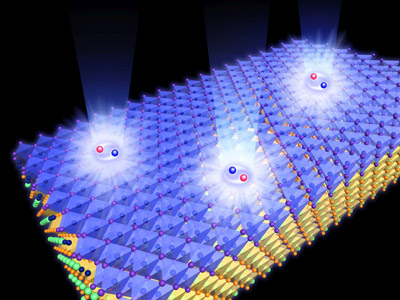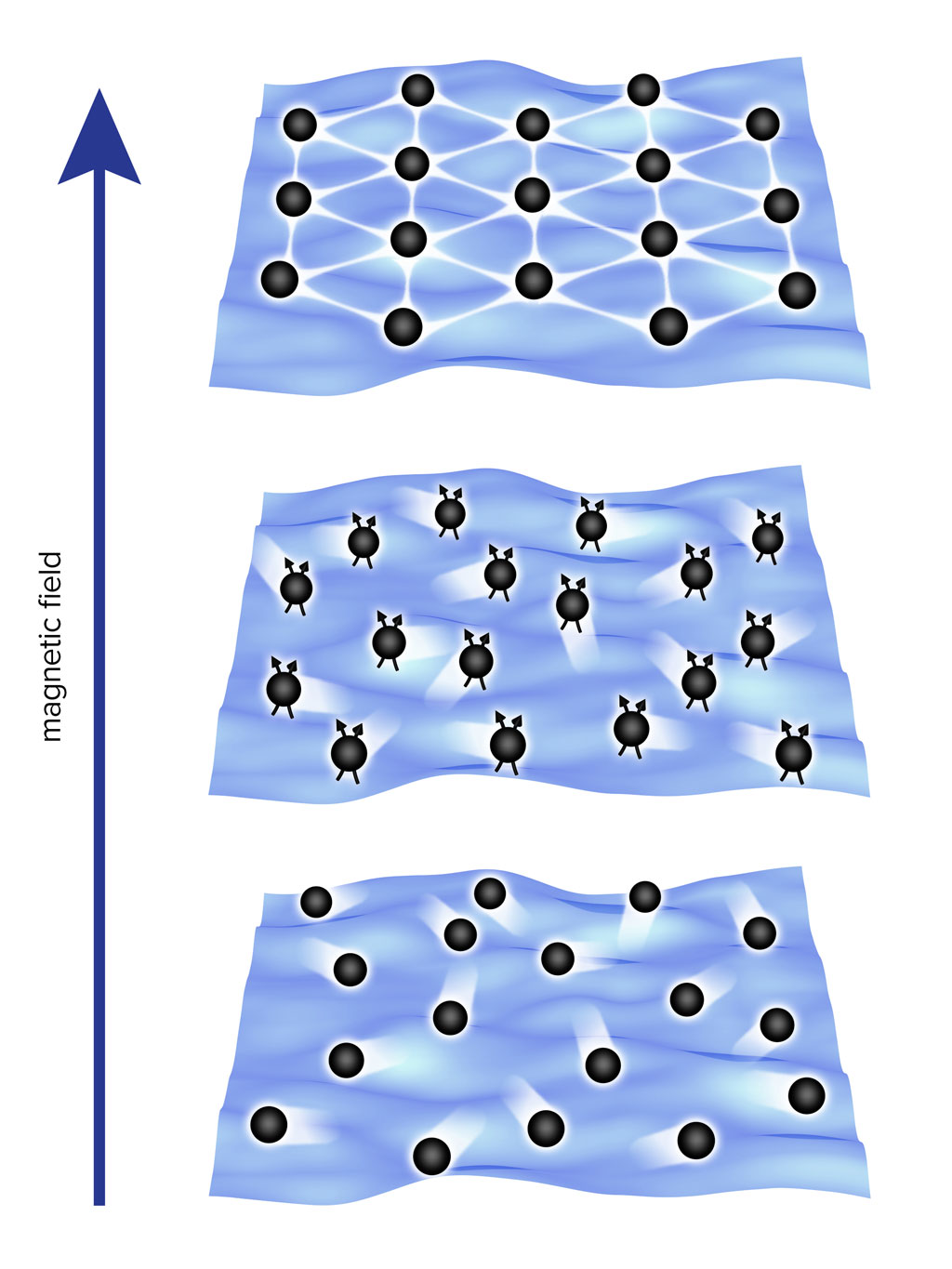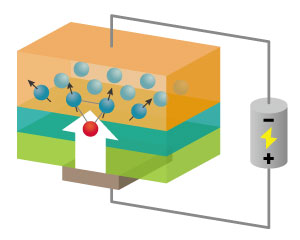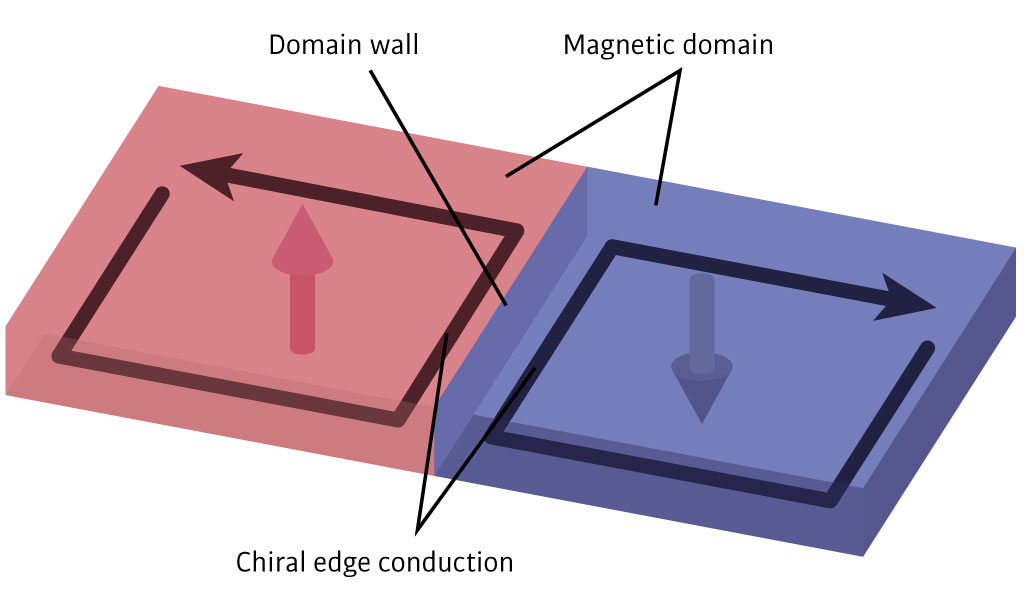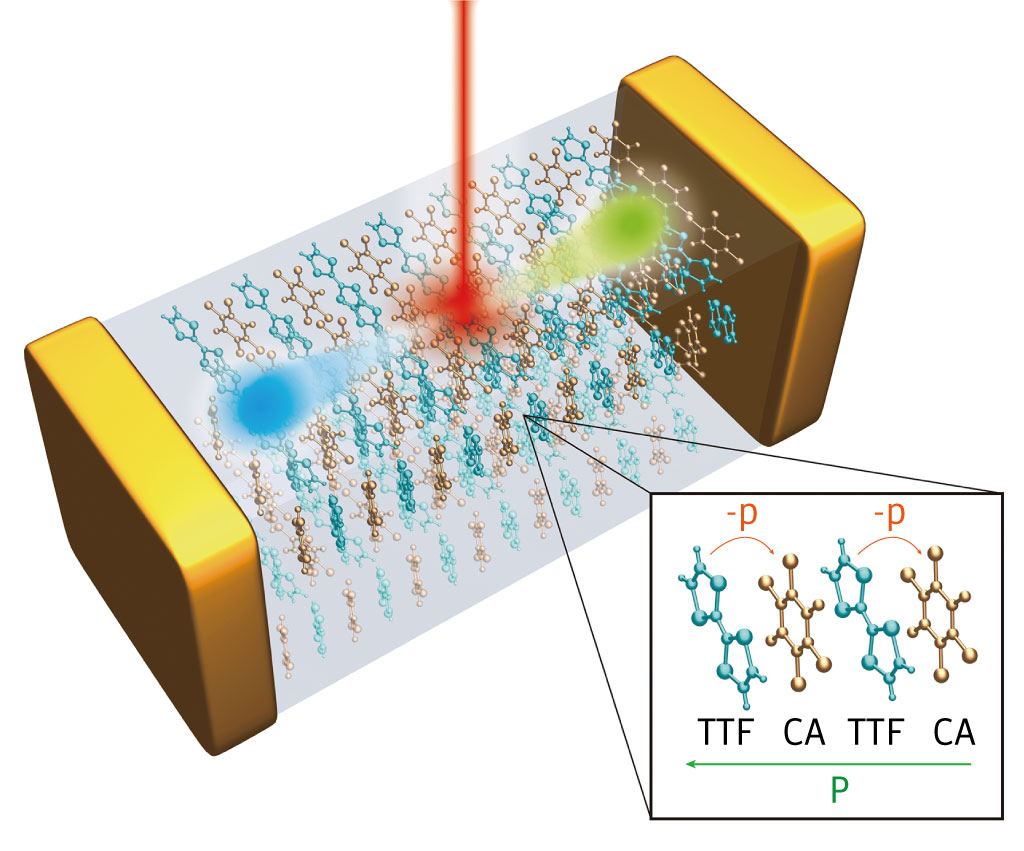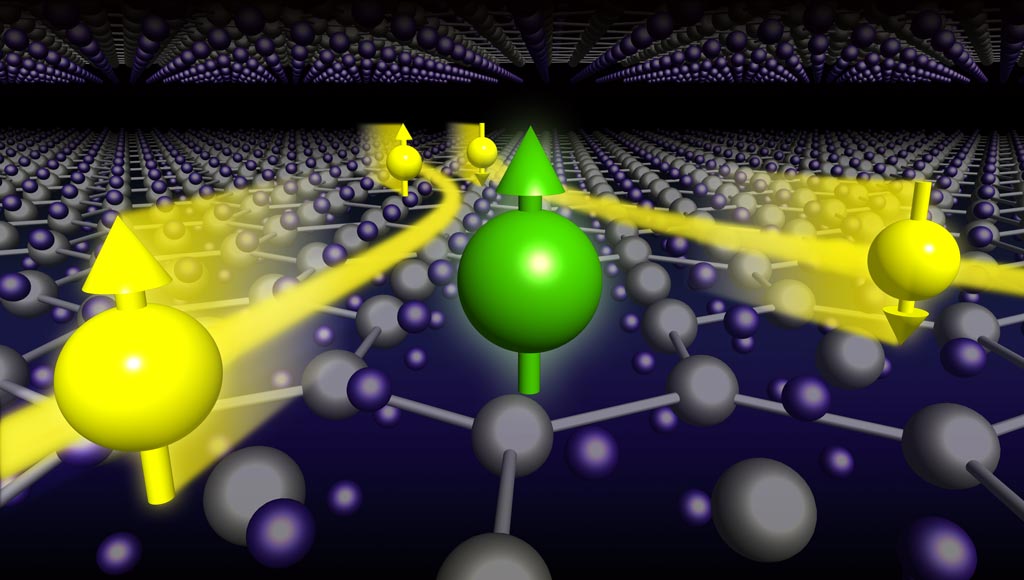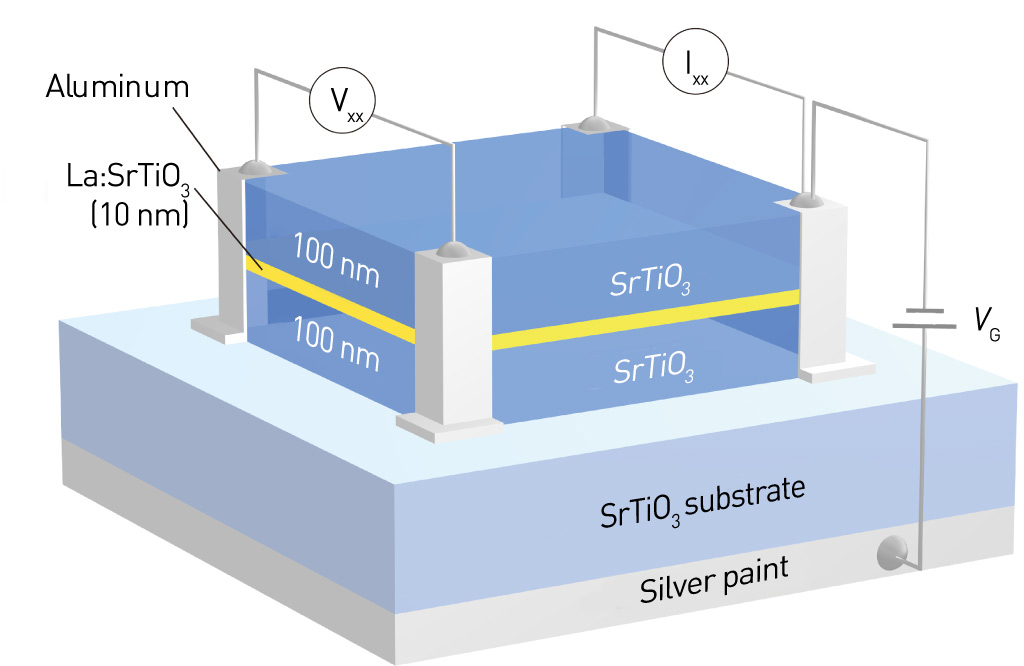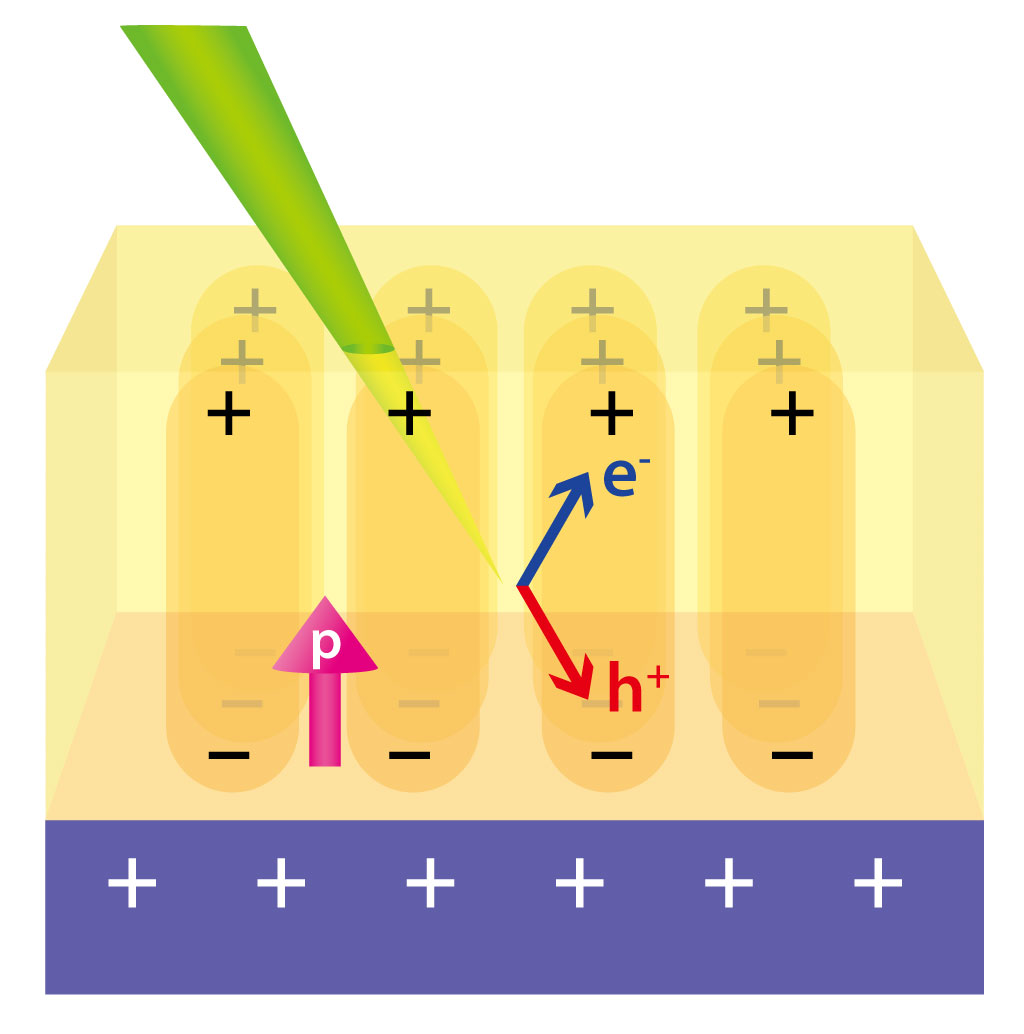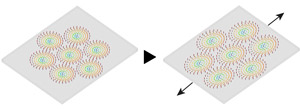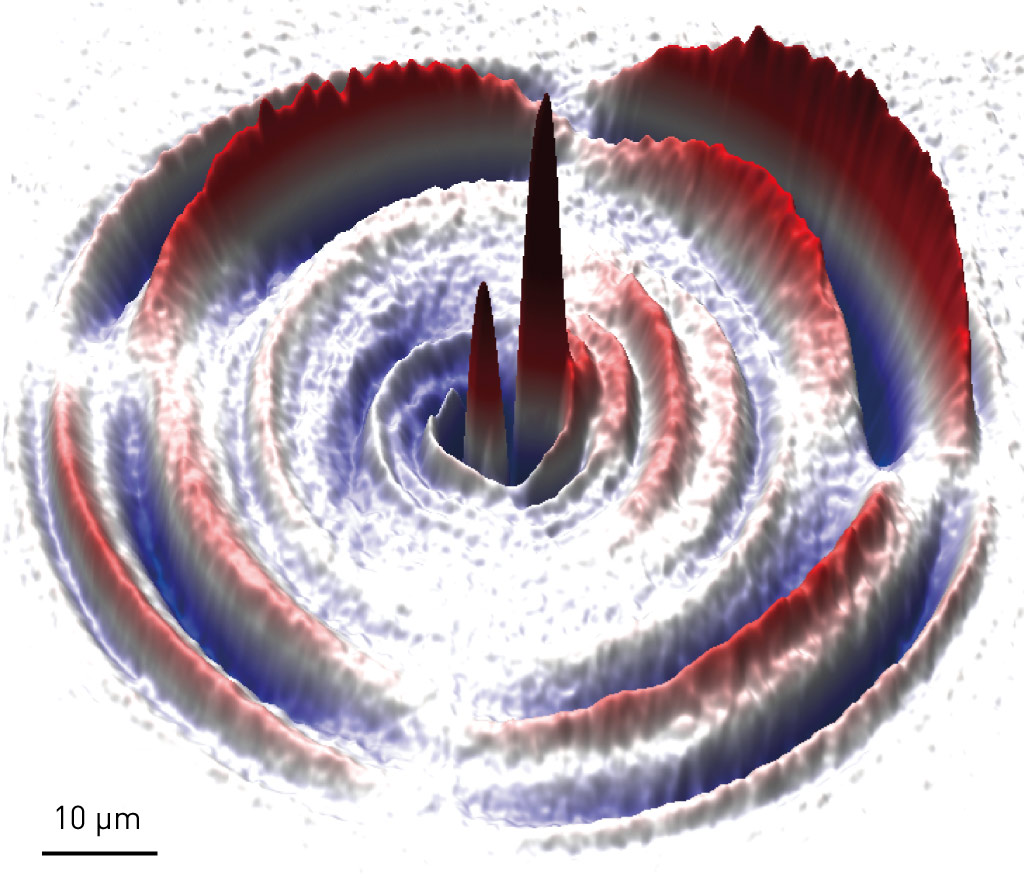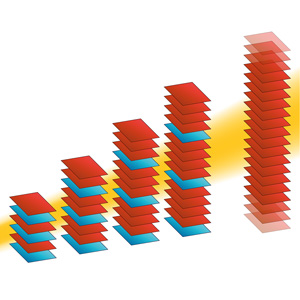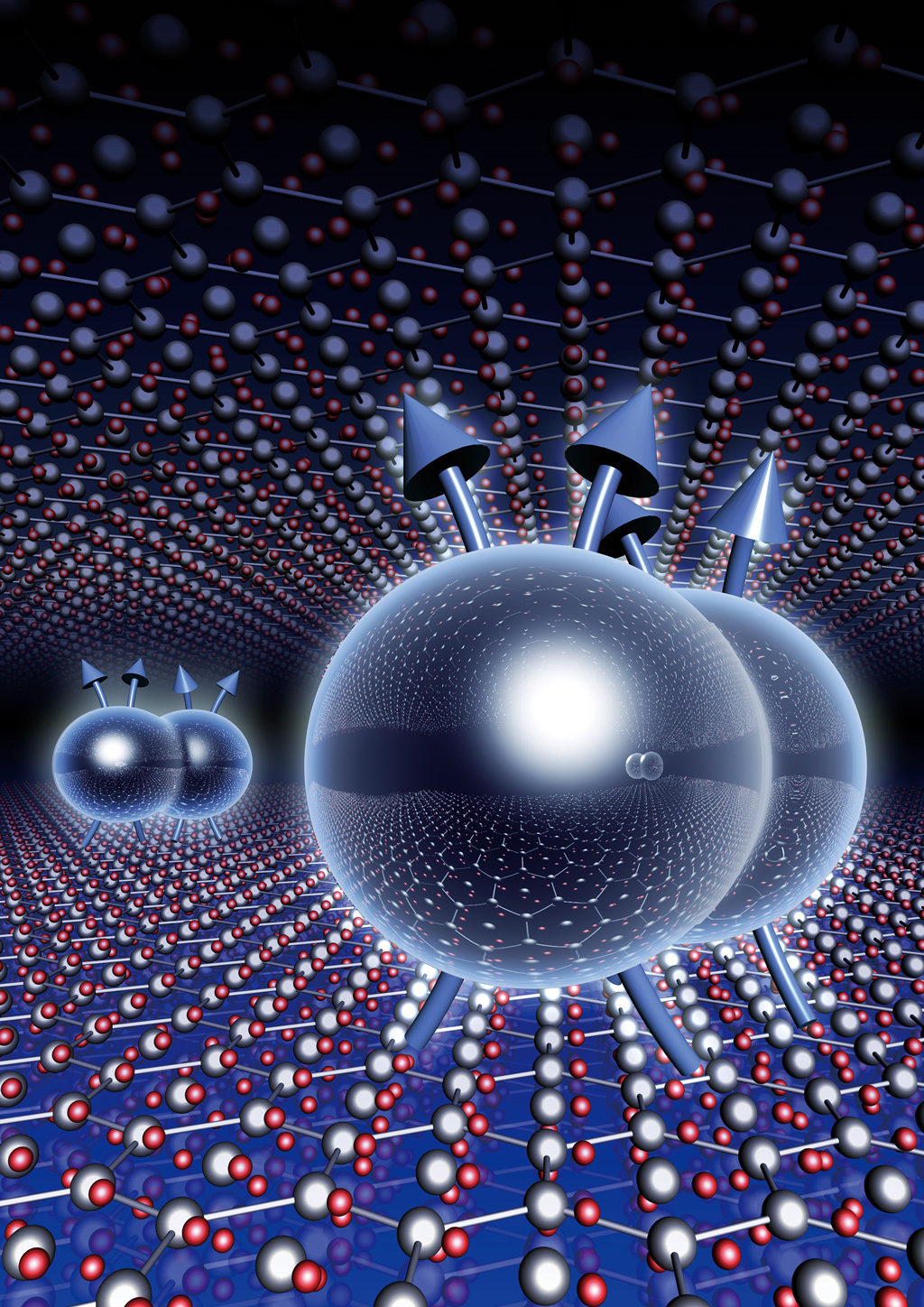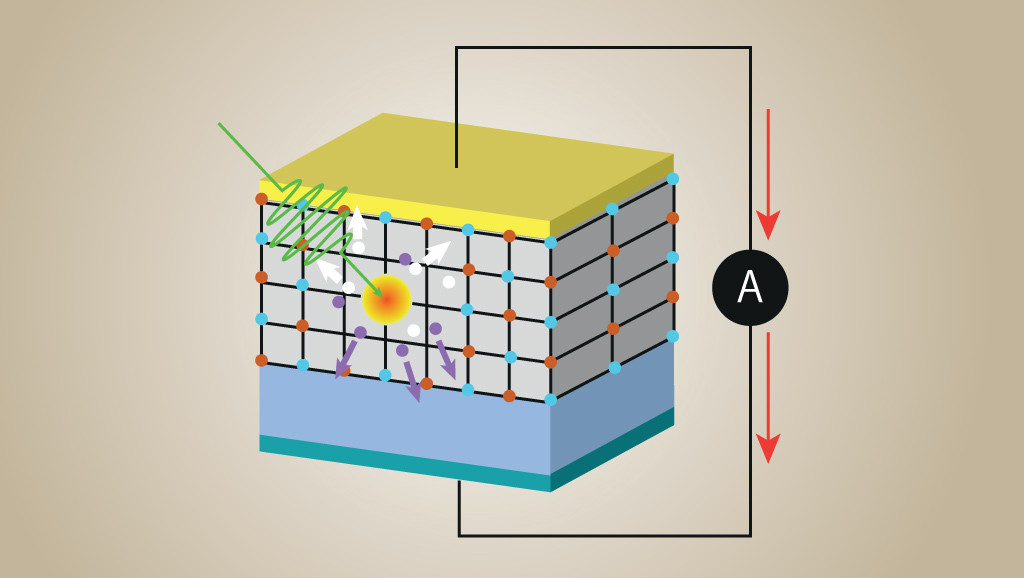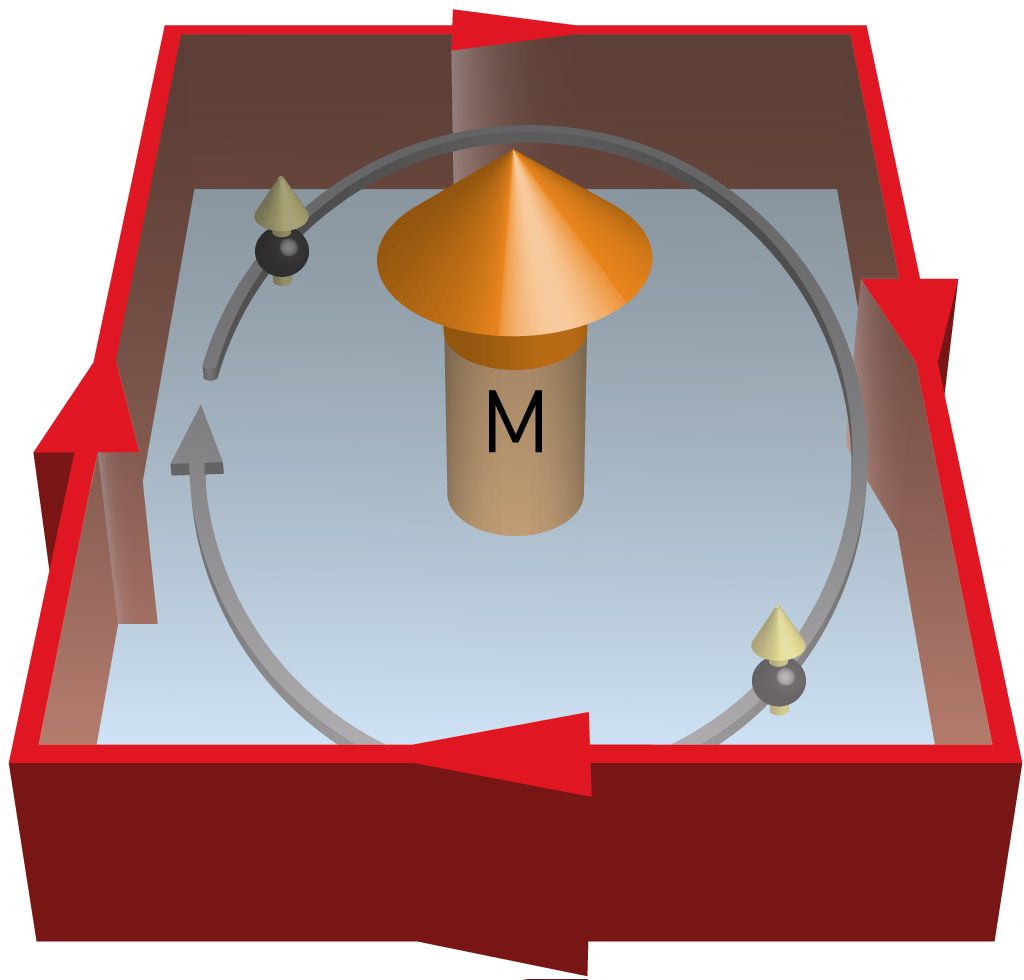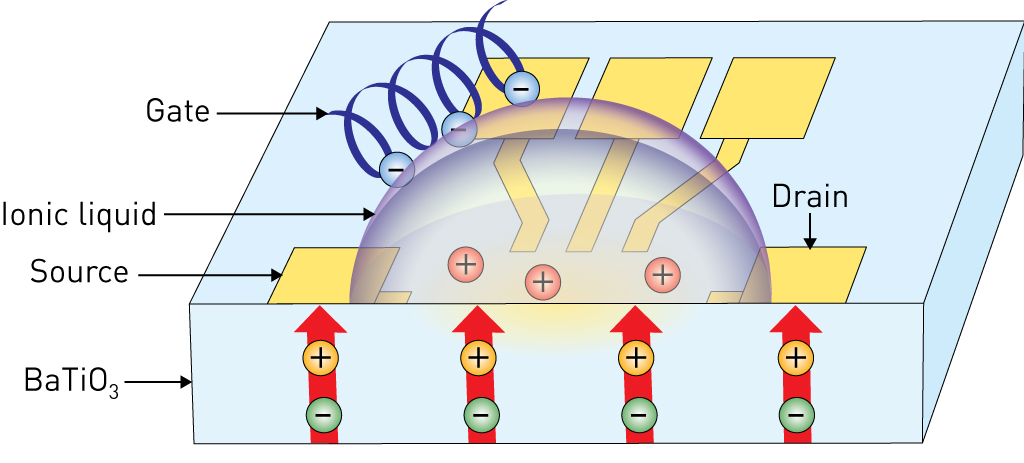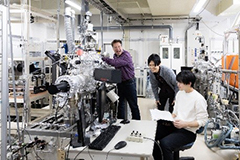Strongly enhanced exciton shift current in a noncentrosymmetric wide bandgap semiconductor
Shift current is a steady-state photocurrent driven by the geometric phase of the electron wavefunction in materials lacking inversion symmetry. Due to its dissipation-less and ultrafast responsive natures, shift current is expected to be a fundamental principle for next-generation energy harvesting and optoelectronic devices. Furthermore, unlike conventional currents, shift current does not rely on the presence of free carriers, leading to the theoretical prediction that excitons, which are charge-neutral bound states of electrons and holes, can also generate shift current.
In this study, we investigate excitonic effects on shift current using high-quality thin films of cuprous iodide (CuI), a wide bandgap semiconductor with a noncentrosymmetric structure and strong excitonic response. We observed a pronounced enhancement of shift current at the exciton resonance energies. Moreover, the enhancement is detected not only at the lowest-energy exciton but also at the n = 2 Rydberg exciton. This is the first demonstration of exciton-induced shift current observed as a direct photocurrent. Furthermore, the generation efficiency of shift current from excitons significantly surpassed that of conventional interband transitions, demonstrating the potential for substantial enhancement of shift current by excitonic effects.
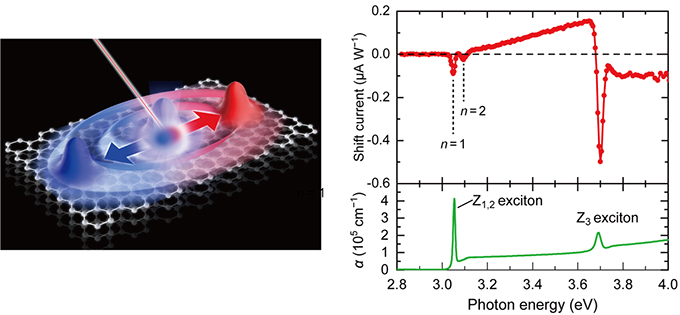
(Left) Schematic illustration of shift current generation from an exciton. (Right) Excitation spectrum of shift current (top) and absorption (bottom) in cuprous iodide thin films. A pronounced enhancement of shift current is observed at two exciton resonance energies, refered to as n = 1 and 2 for Z1,2 and Z3 excitons.
Detection of exciton confinement crossover in two-dimensional quantum wells of a layered semiconductor
An exciton, a bound state of an electron and a hole, confined in a low-dimensional system exhibits a distinct state from that in three-dimensional bulk materials. Especially in two-dimensional quantum wells, it is known that two types of confinement effects appear depending on the well layer width: an increase in exciton binding energy (strong confinement) and quantization of exciton center-of-mass motion (weak confinement). However, the transition between these two has not been systematically investigated.
In this study, we have employed a molecular beam epitaxy (MBE) to fabricate samples with systematically varied well widths at the atomic layer level for lead iodide (PbI2), a typical two-dimensional semiconductor that exhibits a large excitonic response. The optical absorption spectra of the obtained high-quality quantum-well structures show sharp exciton absorption near the band edge and vibrational structure due to the quantization of exciton center-of-mass motion. The quantization energy is well explained by the tight-binding model when the well width is thick, but when the well width is less than 5 atomic layers, there is a marked shift to the high energy side, indicating a strong confinement effect. This is the first clear detection of the crossover between strong and weak exciton confinement regimes.

Transition in exciton confinement state observed in quantum-well structures of a layered semiconductor PbI2
Mott-insulator to metal transition in artificial oxide quantum wells
It is widely known that many examples of unconventional superconductivity emerge when carriers are doped in two dimensional Mott insulators. For many years, efforts have been focused on artificially fabricating two-dimensional Mott insulators with thin film technology of transition metal oxides. However, there have been few examples that succeeded in achieving metallic states by carrier doping.
In this study, we have employed a gas source molecular beam epitaxy system with our original design. Confined single quantum well structures are constructed by sandwiching a correlated metal SrVO3 layer with two band insulator SrTiO3 layers. High quality SVO3 films exhibits clearer transition from metal to insulator at about 1-2 nm when the thickness is reduced. When electron carriers are doped in these quantum well Mott insulators, metallic state is successfully induced. Thus, the SrVO3 quantum wells are demonstrated as an ideal playground for studying physics of correlated electron systems.

Metal-insulator transition in SrVO3 two-dimensional artificial lattices
Excitonic properties of high-quality iodide thin films grown by molecular beam epitaxy
Iodide semiconductors are quite promising materials for such optical devices as solar cells and light-emitting devices because of their strong optical absorption and high exciton stability. Moreover, iodides start to attract much attention as ideal platforms for exploring emergent quantum phenomena due to recently discovered topological magnetic structures and quantum transport. However, very few studies have been reported on the epitaxial films of iodides. We aim at establishing the growth method of high-quality iodide thin films employing molecular beam epitaxy (MBE), and exploring novel quantum physics and functionalities emerging at the interface of iodide heterostructures.
To begin with, we grew cuprous iodide (CuI) films on InAs substrates with excellent lattice matching, yielding in single-crystalline films having outstandingly high lattice coherence and atomically flat surfaces. The films exhibit extremely sharp free exciton emission at low temperatures that has never been observed in bulk single-crystals. This is a major step toward the development of iodide electronics.

Schematic of free exciton emission from epitaxially-grown CuI films
Quantum transport phenomena of spin polarized electrons in high mobility magnetic semiconductor EuTiO3
Magnetic semiconductors are a vital component in future spintronics. Conventional magnetic semiconductors contain a large amount of magnetic impurities as the dopant, resulting in the low mobility. Therefore, it is difficult to observe interference effects of spin polarized electrons such as Shubnikov- de Haas (SdH) oscillation. Here, we have developed a gas source molecular beam epitaxy system, yielding in high crystalline quality films of La doped EuTiO3. The maximum mobility reaches 3,200 cm2V-1s-1 at 2 K, showing clear quantum oscillations in magnetoresistance. Using first-principles calculations, we show that the observed SdH oscillations originate genuinely from Ti 3d-t2g states which are fully spin-polarized due to their energetical proximity to the in-gap Eu 4f bands. This suggests that EuTiO3 film is an ideal magnetic semiconductor, offering a fertile field to explore quantum phenomena.

Schematic of an interference effect of spin polarized electrons
Generation and nonlocal spreading of shift current under local photoexcitation
Noncentrosymmetric materials exhibit a generation of photocurrent without an external electric field, called the bulk photovoltaic effect. In this study, we have revealed the mechanism of the photocurrent generation and spreading under local photoexcitation by potentiometric measurements for a prototypical ferroelectric semiconductor SbSI.
We shined a focused laser light on a SbSI single crystal, and measured the voltage inside and outside of photoirradiated region simultaneously. The results indicate that the photocurrent emerging in photoirradiated region is a less dissipative current driven by the Berry phase of electron’s wavefunction, termed shift current, whereas current spread outside as a dissipative current driven by the internal field. On the basis of result, we determined the equivalent circuit model to simulate the bulk photovoltaic effect in various devise structures. We have also succeeded in fabricating thin films of SbSI with aligned polarization axis by molecular beam epitaxy.

Schematic of photocurrent generation under local photoexcitation in ferroelectric semiconductor SbSI
Control of conduction electrons by magnetic monopoles in a magnetic semiconductor
Magnetic semiconductor is one of the candidates for novel spintronics devices with low power consumption because both magnetic and transport properties can be controlled. Because the Hall effect of magnetic semiconductors can be electrically tuned, magnetic semiconductors have attracted considerable interest from the view point of the application.
Band crossing called as Weyl nodes which generate magnetic monopoles in momentum space is known to be one of the origin of anomalous Hall effect (AHE). We discovered a new phenomenon of AHE in a high electron mobility oxide magnetic semiconductor, EuTiO3. During the magnetization process of the spin moment on Europium (Eu) under applied magnetic field, it was found that the AHE is not proportional to the magnetization as usual magnets. We revealed that changing the energy position of Weyl nodes that create magnetic monopoles in momentum space by tiny change of Zeeman splitting in the magnetization process dramatically affect the trajectory of electron conductions.

Schematic of the trajectory of electron conduction modified by the monopole (red ball) in momentum space
<!–
Observation of shift current photovoltaic effect in an organic ferroelectric compound
Noncentrosymmetric crystals show spontaneous current by photoexcitation. The origin of this phenomenon is theoretically revealed to be the shift current driven by the Berry phase of the Bloch wave function. Recently, shift current attracts attention due to its topological origin as well as the large potential for applications in solar cells and photo-detectors. Here, we focus on an electronic ferroelectric, a material showing a spontaneous polarization dominantly originates from the displacement of electron clouds, as a candidate material showing large shift current. An organic charge transfer complex TTF-CA is one of the representative electronic ferroelectrics. In addition, this compound has a large response to visible and infrared light due to the narrow bandgap of 0.5 eV. We observed a sizable zero-bias photocurrent in TTF-CA below the ferroelectric transition temperature under simulated solar radiation. The current density is larger by several orders compared to other ferroelectric compounds. We also revealed that the zero-bias photocurrent propagates quite a long distance by means of local photoexcitation. This is a clear evidence for the non-local nature of shift current.

Schematic of shift current generation in an organic ferroelectric TTF-CA
–>

